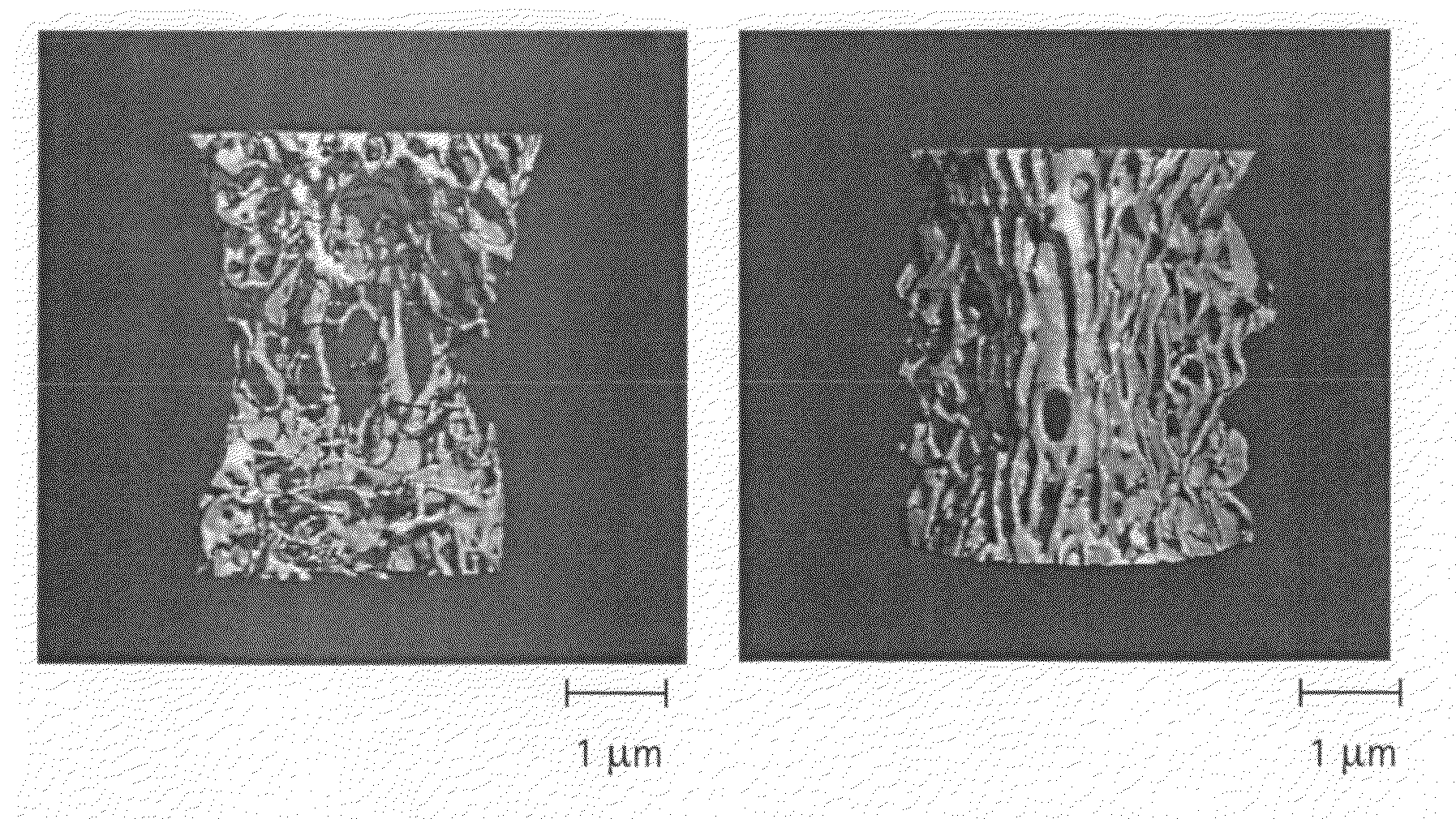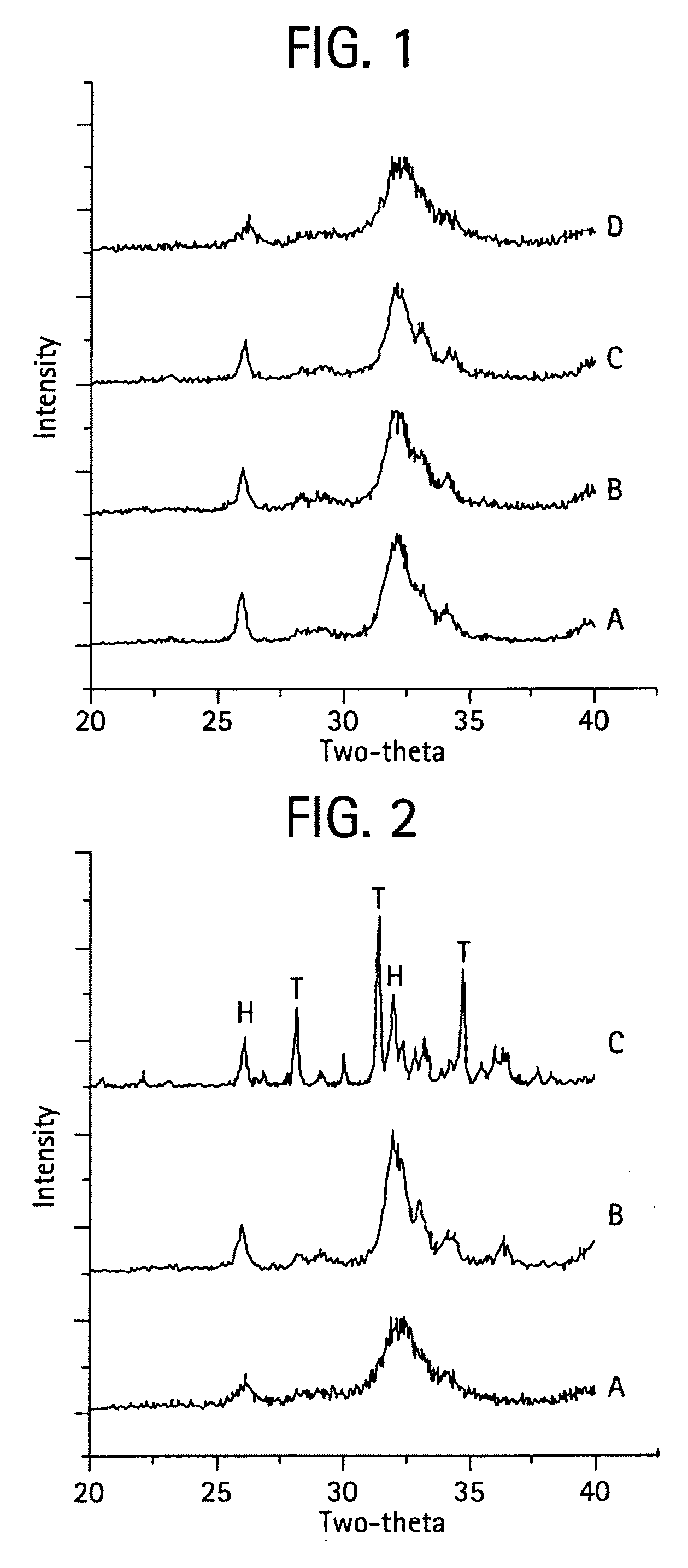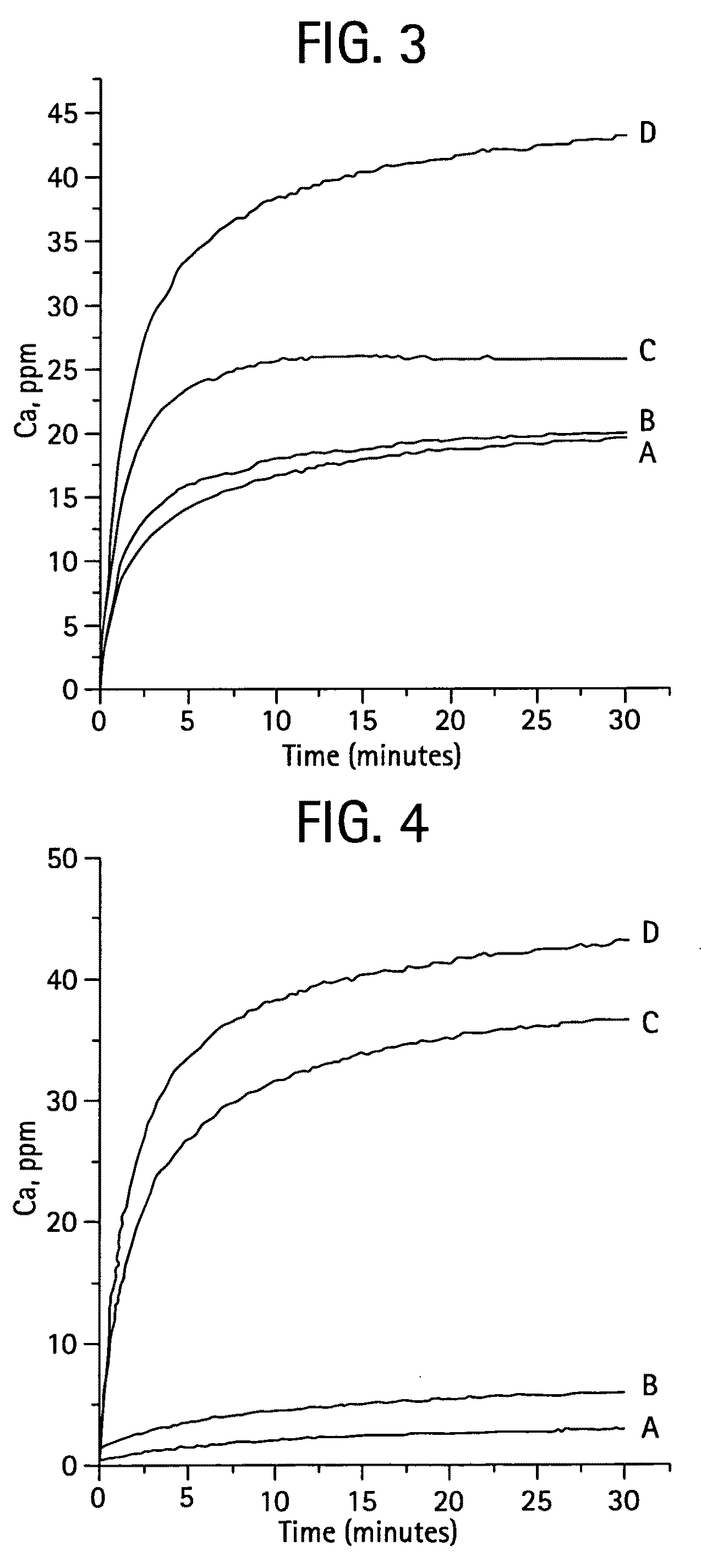Calcium phosphate-based materials containing zinc, magnesium, fluoride and carbonate
a calcium phosphate and fluoride technology, applied in the direction of biocide, prosthesis, drug composition, etc., can solve the problems of reducing the formation of cancellous bone, thinning of cortical bone, bone loss, etc., to minimize or prevent bone resorption, promote bone formation, avoid deleterious effects
- Summary
- Abstract
- Description
- Claims
- Application Information
AI Technical Summary
Benefits of technology
Problems solved by technology
Method used
Image
Examples
example 1
[0058]Cell response to Mg / Zn / F-BCP materials. Unsintered materials used for studies on in vitro cell response included Mg—CaP, Zn—CaP, F—CaP, Mg / Zn / F—CaP.
[0059]Effect on proliferative capacity of osteoblast-like (bone-forming) cells. The effect on the proliferative capacity of human osteoblast-like cells was studied by incubating human MG-63 (105 cells / well / ml) in the presence or absence of materials at 37° C., 5% CO2 for 5 days. The cells were radiolabeled with 1 mCi of 3H-thymidine, and the proliferation rate was determined by scintillation counting of TCA precipitable DNA. The materials significantly increased the proliferative capacity of osteoblast-like cells. Higher proliferative effect compared to control in cells exposed to the synthetic materials was observed.
[0060]Effect on phenotype expression of bone growth markers. The effect on the phenotype expression and growth markers of human bone-derived osteoblasts was studied by incubating 105 cells / well / ml in the presence or ab...
example 2
[0063]Preparation and Characterization of Unsintered and Highly Sintered (Ceramic) Materials Incorporating Mg, Zn, and F in a Calcium Phosphate Matrix. The materials are designated herein as Mg / Zn / F—CaP. Mg / Zn / F—CaP will consist of one phase (Mg-, Zn- and / or F-substituted carbonate apatite) or of biphasic calcium phosphate, BCP, an intimate mixture of β-TCP (Mg- and Zn-substituted) and carbonate apatite (Mg-, Zn- and F-substituted). (Mg, Zn, F and Ca have been separately associated with bone formation, bone resorption, biomineralization).
[0064]Studies on synthetic and biologic apatites (mineral phases of enamel, dentin and bone) using a combination of analytical techniques (x-ray diffraction, infrared spectroscopy, chemical analysis) demonstrated that biologic apatites (the mineral phases of enamel, dentin, cementum and bone) are not pure hydroxyapatite, Ca10(PO4)6(OH)2 (stoichiometric Ca / P molar ratio, 1.67) but are associated with minor constituents (most important of which are ma...
example 3
[0067]Preparation and Characterization of Uncalcined or Unsintered Material Incorporating Mg+F (M / F—CaP), Zn+F (Zn / F—CaP), and Mg+Zn+F (Mg / Zn / F—CaP) in a Calcium Phosphate Matrix.
[0068]Materials and Methods. All chemicals used in the preparation of MZF-CaPs or SBM were reagent grade (Fischer Chemicals, New Jersey). MZF-CaP or SBM were prepared by hydrolysis method. Preparations incorporating only Mg, (MgCaP) or Zn (ZnCaP), F (FCaP) and all three ions (MZFCaP) in a calcium phosphate matrix were made. The preparations were characterized using Xray diffraction (X'Pert, Philips), FTIR (Nicolet 500), thermogravimetry, TGA (, and inductive coupled plasma, ICP (ThermalJarrel Ash) for Ca, Mg, Zn, P, Na contents; and F for F ion selective electrode.
[0069]The MZFCaP or SBM preparations showed XRD profiles shown in FIGS. 1 and 8. F—CaP, MgCaP and CaP incorporating all three ions, MZFCaP showed only the apatite XRD profiles, with FCAP showing the higher crystallinity (larger crystalsize); while...
PUM
 Login to View More
Login to View More Abstract
Description
Claims
Application Information
 Login to View More
Login to View More - R&D
- Intellectual Property
- Life Sciences
- Materials
- Tech Scout
- Unparalleled Data Quality
- Higher Quality Content
- 60% Fewer Hallucinations
Browse by: Latest US Patents, China's latest patents, Technical Efficacy Thesaurus, Application Domain, Technology Topic, Popular Technical Reports.
© 2025 PatSnap. All rights reserved.Legal|Privacy policy|Modern Slavery Act Transparency Statement|Sitemap|About US| Contact US: help@patsnap.com



